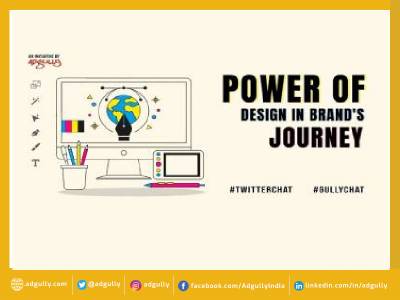Experts discuss the elements to build a unique design language for brands
If there were any arguments for good design, one only had to look at the achievements of Apple Inc., one of the most valuable companies in the world. Apple made computers accessible to the ordinary public, unlocking a multi-trillion dollar market. While computers have become commonplace today, we must recall that Thomas Watson, President, IBM, once believed that there was a ‘world market for maybe five computers’.
As the focus of consumer companies moves from offering great products to offering great experience, the role of good design has become a salient factor in the brand journey. Design dictates how a consumer interacts with a product and we know from the example of Apple and many other categories such as sneakers, packaged beverages, personal care, etc., that this can be a game changer.
On Friday, May 28, 2021, Adgully organised a GullyChat on the topic ‘The role of design in a brand’s journey’, which was joined by some of the leading experts on design in the country.
Shashwat Das, Founder, Almond Branding
Ashwini Deshpande, Co-founder, Elephant Design
Prasanna Sankhe, Founder/ Partner at HYPHEN
Lulu Raghavan, Managing Director, Landor & Fitch India
Govind Pandey, CEO, TBWAIndia
Sarvesh Raikar, Regional Creative Officer, Lowe Lintas & Creative Head, Lintas Live
Design Thinking and Process
Ashwini Deshpande said, “Design is about aligning brand’s purpose, users need and category landscape. Design must begin at the beginning of an idea. Design is not a thin layer to be applied in the end. It is the blood that needs to flow through.”
Prasanna Sankhe said, “Design can be easily integrated in any brand design journey by asking hard questions. The solutions are, most of the times if not entirely, versions of design thinking.”
Shashwat Das remarked, “The answer lies in a famous quote from Steve Jobs. People think design comes in when the product needs to be made to look good. But the truth is design is how it works.”
Sarvesh Raikar’s advice was, “Before deploying designing skills, deploy listening skills. Always, the best designs come from truly understanding the reason for the creation of a product/ service.”
Lulu Raghavan added here, “Design thinking starts in the beginning. Define the challenge. Empathise with the user. Develop user-centric ideas. Use prototypes to test ideas that best work to address user pain points and wow the user. Apply great design to the prototypes!”
Govind Pandey explained, “New Product Development starts with research. Product Designers wear strategist hats at start. They have to observe how consumers behave with the category to get answers to their hypotheses. An MVP (Minimum Viable Product) is made on this research, but we need to test and see how well it works. Unless you don’t validate the MVP with research, you can’t move forward.”
Design is a language
Pandey said, “A good design says a lot of things without uttering a single word. It has to reflect a superior understanding that makes it more intuitive and creates an experience that’s addictive or habitual.”
Raghavan observed, “There are not enough user-centric insights. Companies can spend a lot more time deeply understanding consumers and their behaviours before developing new products. It is usually manufacturing driven, but outliers are companies like Whirlpool, IBM, PepsiCo, Godrej, and Intuit.”
Sankhe added, “Like the name, the physical or the personality of an individual helps one stand out, similarly design thinking applied to colours, typography, tonality of brand, every little detail can help the brand stand out.”
Deshpande noted, “Sometimes, depending upon the category, there is a merit in using some category codes and then building relevant differentiation on top of those codes. A wheel does not have to be invented every time.”
To catch the entire conversation thread, follow @adgully on Twitter.









Share
Facebook
YouTube
Tweet
Twitter
LinkedIn